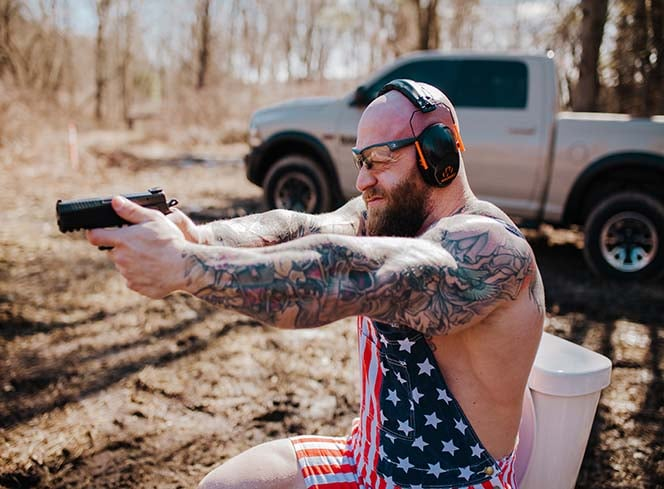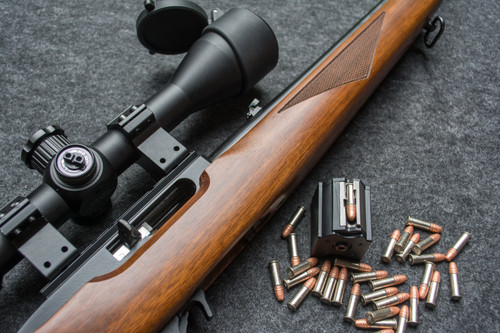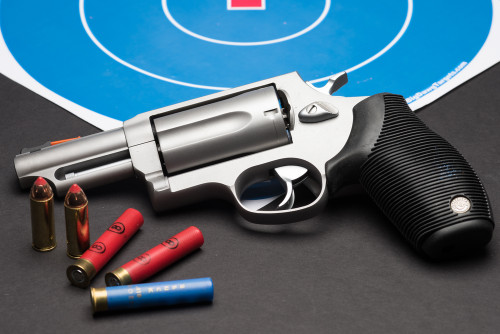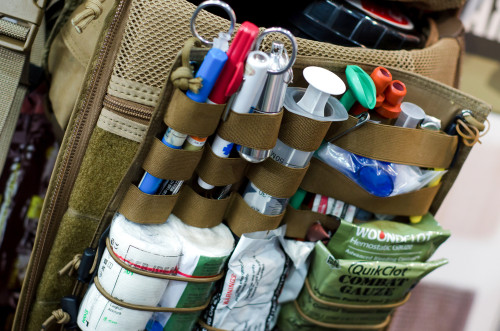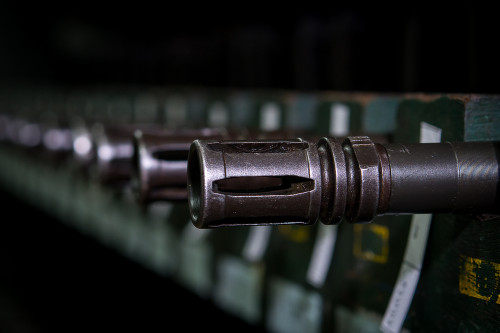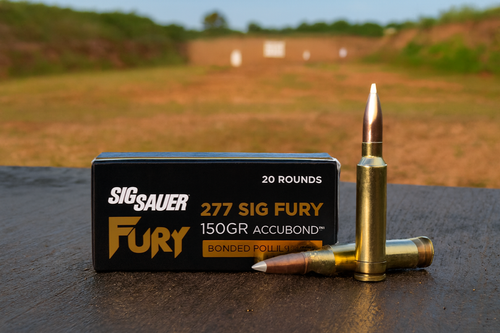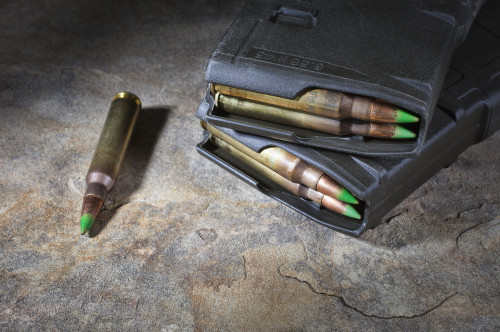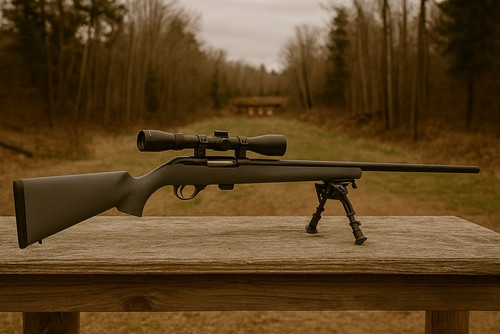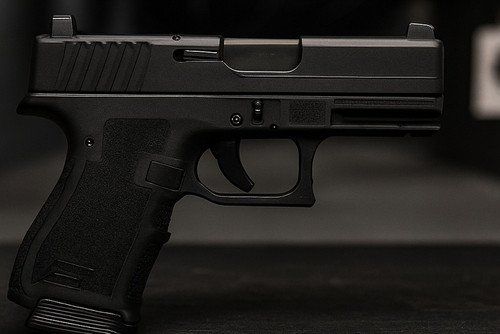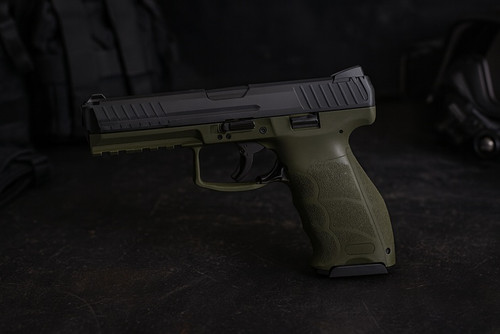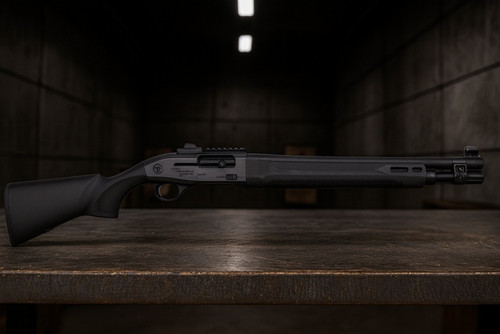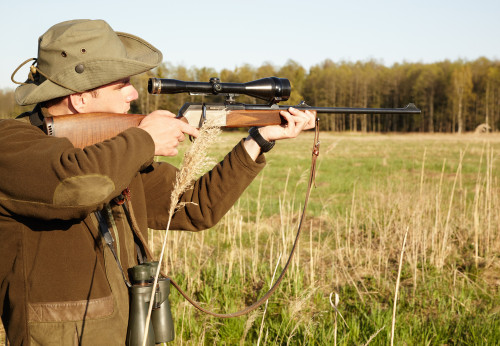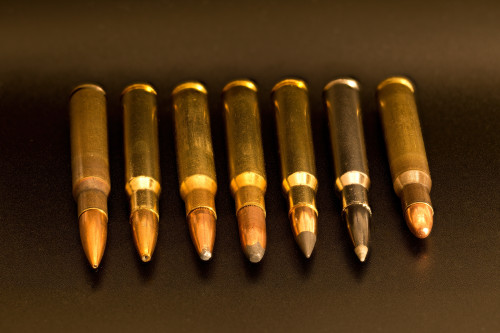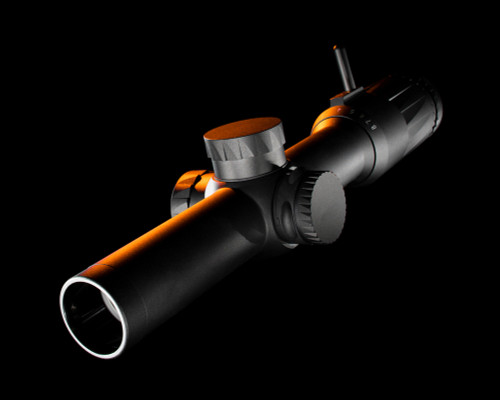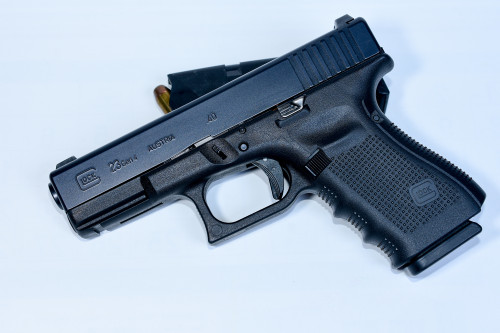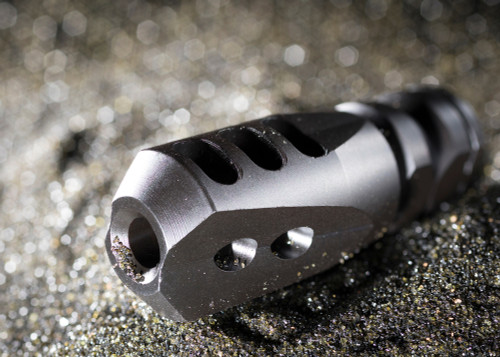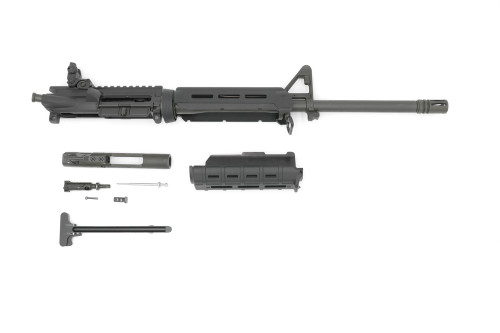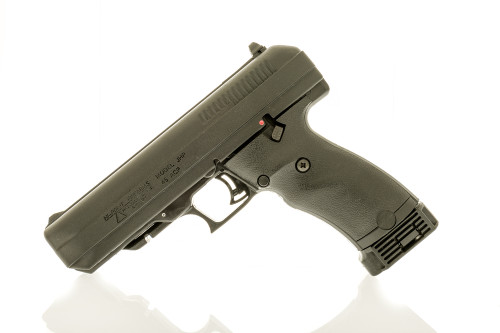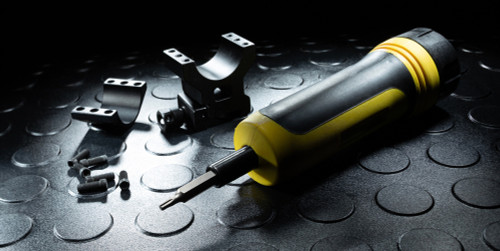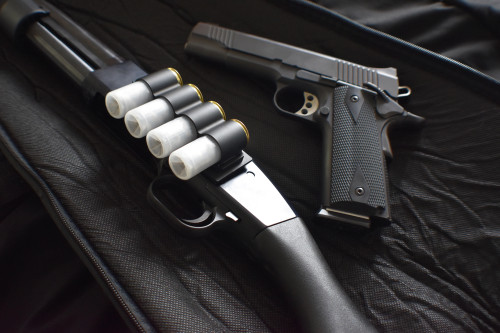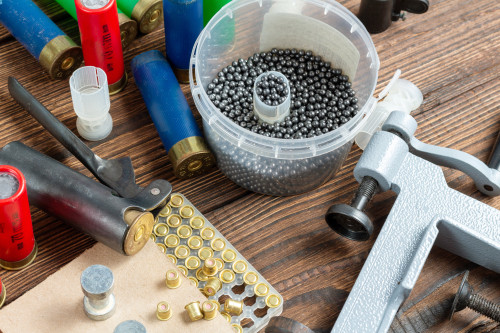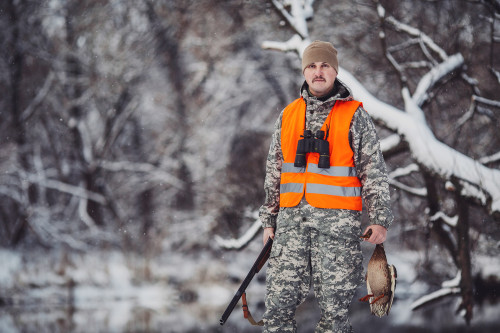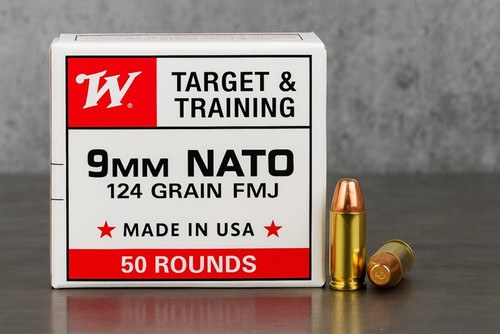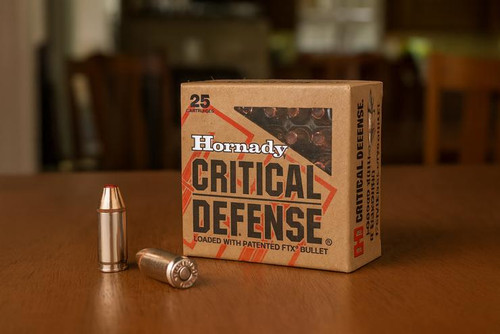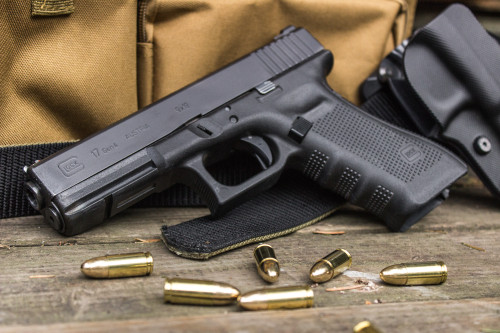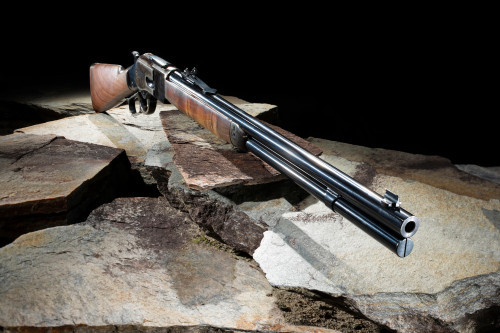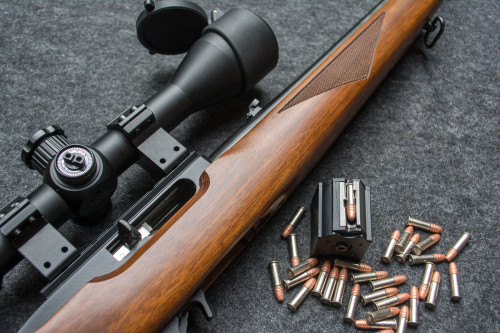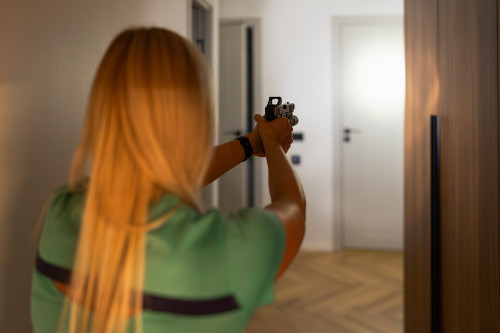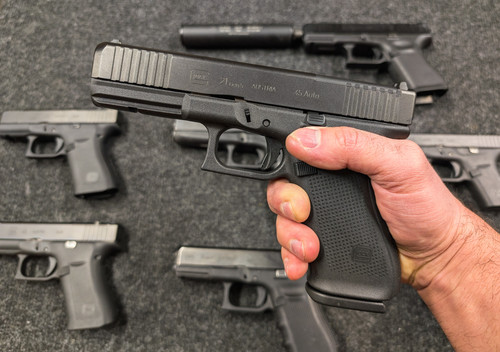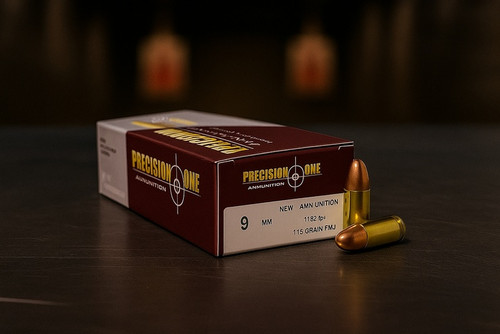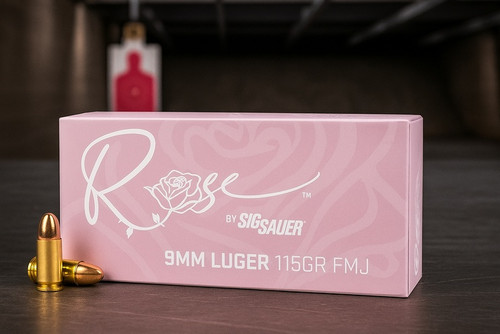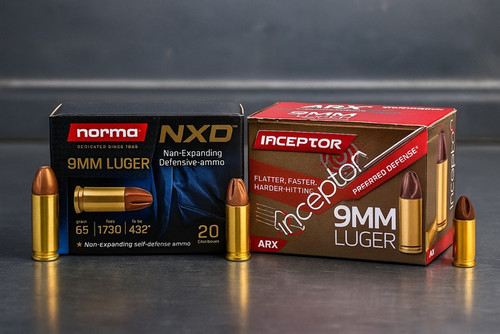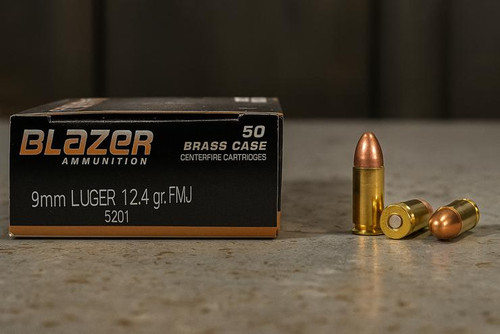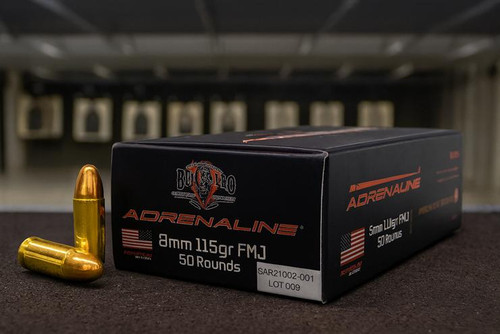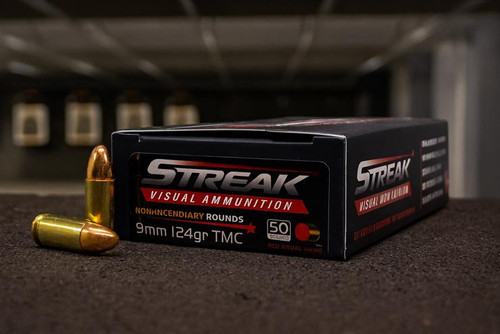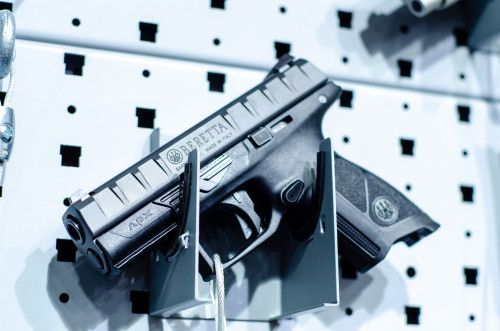Believe it or not, the handgun is, by far, the hardest firearm platform to master. Its smaller size, compared to that of its larger brethren the long gun, such as your standard hunting rifle, exemplify the effects of Isaac Newton’s Third Law of Motion; When an object exerts a force on another object, there is an equal and opposite force pushing back against the object who initiated the action. With that in mind, and a little additional physics head banging, we are going to dive into how to exert control over this unrelenting law.

Handgun Fundamentals Online Training
$97.00
at Pro Armory
Prices accurate at time of writing
In my time teaching and refreshing firearms fundamentals to fellow firearms enthusiasts, I have seen a lot of different grips and stances, and heard a lot of different rationales for those various initial preferences. None of which, however, typically have continued those styles once we began our conversation about constructing the master grip. Therefore, let’s begin this conversation here, and see if you feel a similar way as my students did.
Grip Your Firearm Like You Mean It
Contrary to popular belief, how you grip your handgun is not only a means to hold on to the firearm, but also a means to control it and bend that explosive power to your tempered, well trained, will. We have all watched those guntubers on various entertainment networks, that can shoot a Bill Drill, a string of 6 shots from their side arm on a target at 6-10 yards as fast as possible, and accomplish the whole kit kat and kaboodle, from holster, to target, to complete in under 2.5 seconds. I mean that is lightning fast, and kind of an intimidating milestone to take on, if you are as passionate a shooter as I am.
First thing is first, though, let’s make sure your handgun fits you. Before we get started, please make sure your firearm is unloaded. The next thing we are going to do is move from step to step, constructing the perfect grip.
5 Steps to a Perfect Grip:
1. Verify that your firearm is unloaded and safe.
2. Holding the firearm in your non-dominant hand, create a “C” with your dominant hand.
A.) Place the back strap in the apex of your “C” that you created and wrap your middle, ring and pinky fingers around the pistol grip, with your middle finger hugging the trigger guard.
B.) Your dominant index finger should be resting along the frame, above the trigger well, and your dominant thumb should be on the opposite side of the pistol, as seen in the image below.
3. With this first stage of your grip, notice the knuckle where my dominant thumb connects to where my hand sits. It is on the left side of the firearm and between that thumb and my index finger, I have created a vice on the backstrap of the firearm, as close as I can get to the beavertail. With these things in place, check the firearms fit for you by placing your trigger finger on the trigger.
A.) If the firearm fits your hands, your dominant index finger should rest on the trigger about halfway into your distal phalanx.
B.) If this is not the case, the firearm might be too big or too small for you.
4. Now that we have determined your firearm fit, we can complete our grip. Bring your non-dominant hand to the firearm as if you are bringing your hand up to shake hands with another person.
A.) Your thumb should come to rest as far forward on the frame of the handgun as possible, without separating the heels of your right and left hands.
B.) Simultaneously, your non-dominant index finger is going to index between the middle and proximal phalanx on the trigger guard followed by the other three fingers stacking below.
5. The last step in this process is to create appropriate grip tension between your hands, aided by the appropriate extension of your arms when presenting the firearm on target.
A.) This presentation should be just far enough that you can still create lateral pressure on the grip of the firearm.
- This is key in ultimate recoil mitigation.
Shooting Fundamentals
When it comes to shooting fundamentals, we have to think about the root word, “fundamental,” which means to form a necessary base or core. Once we understand this, we can break it down even smaller. The grip we just overviewed, in concert with your appropriate athletic stance, can be seen as the mechanical stability provided by bricks laying a foundation in a home. While the mortar that holds it altogether is the sight picture and alignment, for without honing that sight picture and alignment to be almost automatic through muscle memory, the bricks alone cannot hold up a home indefinitely. It is only through the pairing of these two ingredients that we can construct a solid platform for success on the shooting range, and, more importantly, in defense of your life.
The grip that we have just pieced together is the foundation to a master grip. Each piece of this grip, modified and played with over time and frequent range visits will quickly hone your shooting skills to be that 2.5 second Bill Drill shooter. Not only that, it will lay the groundwork for shooting mastery across the board.
The next aspect to consider is your stance, which should fall in the same realm as that of a baseball player readying themselves to receive a line drive in any direction. It should be athletic and aggressive, transferring your center of gravity somewhere around your thighs. Your core to your shoulders should be slightly leaned forward, but not hunched over. Keeping your back straight in the forward lean can be accomplished through tilting your pelvis forward. With this pelvic tilt, a staggered stance, and your weight up on the balls of your feet, you will essentially turn your body into a giant recoil mitigation system. This, in concert with the master grip, will all but eliminate that pesky, potentially painful sting of felt recoil, and enable you to handle even larger calibers in the future!
Piecing this all together, and most critical to how the shot lands on target, is the direction the pistol is pointing. I know that is a “well duh” moment, but seriously, every time you are noting hitting where you want on the target, it is because the barrel is not aligned on that targeted point. Your grip on the pistol is perhaps the most self aiding and mechanically aligning tool you can have in your tool box for accurate shots on target.
In high stress situations, the human mind falls to shortcuts and, more often than not, even if you are a well trained law enforcement officer, you do not always acquire your sight picture and alignment on target before you press through the trigger. This leads to a higher miss to hit ratio, and it would make sense as to why that is the case.
With this grip we have just discussed, you should have, at minimum, three points of your muscular-skeletal structure indexing the target. What that means is that you, as the shooter, will have two to three fingers pointing directly at the target. These will act as aiming aids, especially in high pressure situations, such as in competitions or defense encounters.
To send this home, if I ask you to close your eyes, or use your peripheral vision to point at something in the room where you are sitting now, I’m certain that you could point at the object, or structure, with 90+% accuracy. That is the same concept we are applying to your grip on your pistol, and it is through your training with this grip that you can rapidly increase both your accuracy on target, as well as decrease the pause you take between shots.
Therefore, if we can train hard and master the science that surrounds the balance of shooting fundamentals and the mechanical mastery of this grip, you too can master the art that is short splits and fast, accurate shots.
Final Thoughts
The key to shooting like the best in the business is how you learn, as a shooter, to digest information from your shooting experience on the fly. Every time you press the trigger and send a projectile through your target, good bad or indifferent, is a performance metric by which you can measure progress. If you missed where you wanted to hit on the target, ask yourself why mechanically the shot landed where it did and what you had to do in order to influence that outcome. The firearm, barring any rare mechanical defects with the gun itself, will always send the bullet in the trajectory and direction in which the properly aligned sights of the gun are pointing. It is for that reason, if something occurred to not allow the bullet to impact where you thought the firearm was indexed, then there was a hiccup in technique.
Therefore, while the realm of firearms and shooting sports can be quite intimidating, I assure you that these artfully crafted machines are just tools. If you think about it, they operate similar to hitting a nail with a hammer, or having a successful at bat in the greatest sport on Earth, baseball. Both of which, if you have not practiced the techniques involved with the task at hand, can lead to equally frustrating experiences. Therefore, I challenge you to try these tools, tips, and tricks at your next range outing and email me with the results! I look forward to hearing from you all soon! Until then, I will see you in the next one.




 Gabriel Eck
Gabriel Eck